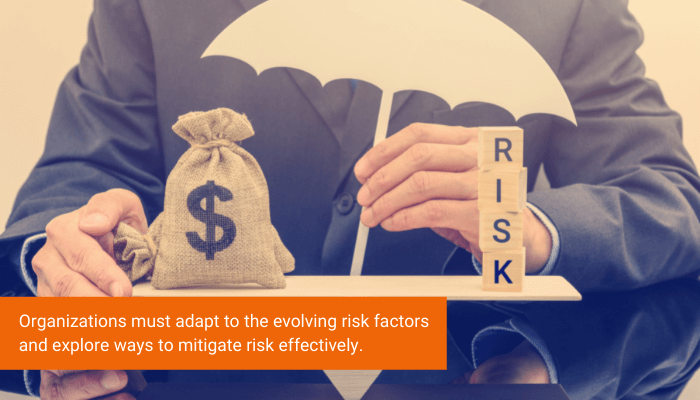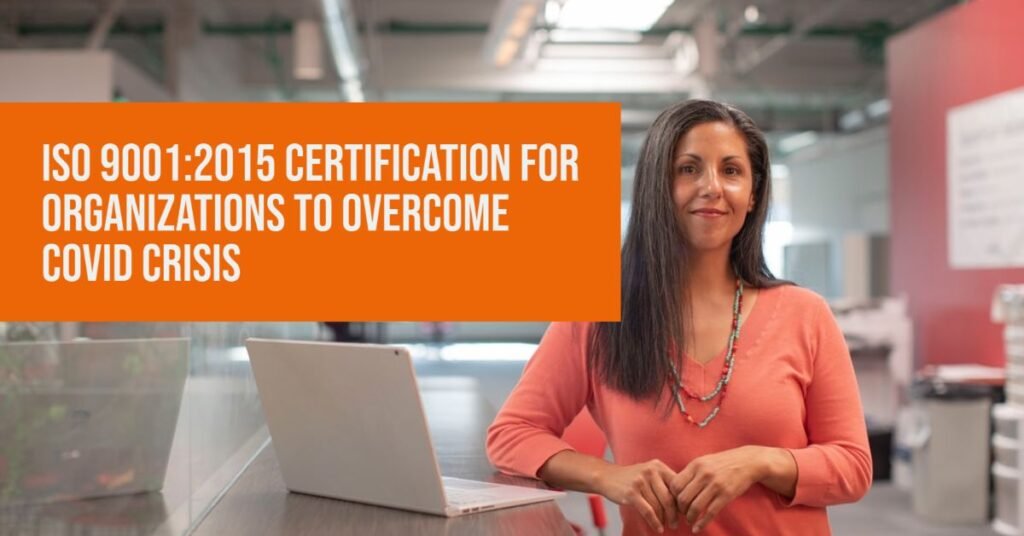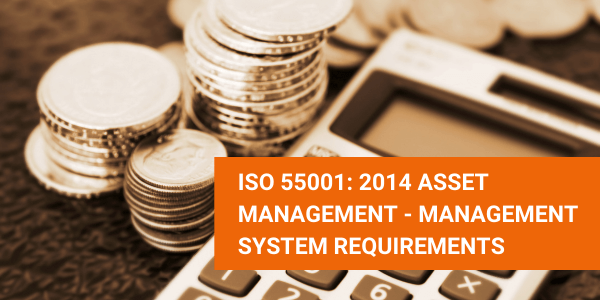ISO Certification Standard is an essential Certification for all major industry sectors and companies of any size and nature of work. There are numerous business benefits from getting an ISO Certification for an organization.
Depending on the area of operation, the organization can choose from a wide variety of ISO Certification Standards for them to transform their business operations. ISO Certification help organization to demonstrate their edge over product and service quality and gain new customers easily.
Risk Management through ISO Certification
Risk Management is one of the core principles of ISO Certification Standards such as ISO 9001:2015 Standard. Organizations must effectively manage risks to thrive in a world of uncertainties.
The risk landscape is evolving in the business world daily. Organizations must adapt to the evolving risk factors and explore ways to mitigate them effectively.

They will have to build a resilient quality management system for identifying and assessing the risks involved in the operational process.
Having a robust Quality Management System in place helps an organization to achieve sustainable business performance over time. QMS System has a framework that will help in conducting gap analysis and identifying the system vulnerabilities.
How to Conduct Gap Analysis?
The Gap Analysis will help in identifying the underlying risks associated with an organization’s operational system. ISO Certification Standard such as ISO 9001:2015 Certification has a well-structured framework that will help to conduct gap analysis and record the findings effectively.
The ISO Auditor will monitor various areas in the organization and they include:
- Physical Aspect – Premises, raw material, finished products
- People Aspect – Employees, suppliers, other Stakeholders
- Operations – Workflow, procedures, policy manuals
- Management – Strategy, Planning & organizing
There are multiple aspects of an organization that determines its sustainability and business growth. A Quality Management System must cover all elements that lead to business development and evaluate their performance.
How to Mitigate Risk in Organization with ISO Certification?
ISO Certification follows a structured approach toward risk mitigation, there are numerous risk identification techniques that the ISO Auditor uses depending on the complexity of the project.
The Gap Analysis stage covers a range of activities such as group interviews, brainstorming, checklists. survey results, etc. After prioritizing the risk, the ISO Auditor must look at implementing the mitigation process.

The ISO Auditor must update the policy manuals and documentation and include the steps of risk mitigation. The risk mitigation plan must cover all the elements of prospective hazards, outcomes, effects, and remedies.
Management Review meeting has to address the risk assessment and mitigation plan with the other functional department heads and employees to take action based on the priority and severity of risks.
Monitoring and Reviewing Risk Associated with an Organization
Risk Monitoring and Reviewing is a critical components for any organization. ISO Certification provides the required framework for monitoring and reviewing the risk associated with an organization’s business processes.
Communicating the analyzed risks to the management and other employees of the team effectively is an important aspect. ISO Certification guidelines insist on it as the best practice of Quality Management.
Risk Monitoring helps in the identification of opportunities and threats and allocates the required resources for effective risk management.
Risk Assessment and Business Profits
Effective risk assessment leads to business growth eventually. the organization will be able to identify hidden opportunities and ways to grow business to new levels.
Risk management is a vital aspect of every organization and must have the right strategy for perfect execution. There are various pillars to risk management such as:
1. Risk Avoidance
In some instances, the organizations will have to refrain from certain decisions that involve unacceptable risk. For example, expanding too quickly to new markets, taking up large project orders and other commitments, etc.
The organization must take a collective decision by assessing the risk and prospective business returns from the action. Risk Avoidance must not hinder the growth of the company.
2. Risk Reduction
Organizations can look at several ways to reduce the risk by strategically handling each aspect of business operations,
There must be certain investments to be made in IT, security systems, CRM systems, new software, etc., for enhanced business productivity. At the same time, there are risks associated with the overall performance of the new business system.
3. Risk Transfer
Risk Transfer is an intelligent move organization can adopt. Depending on the nature of the business activity, the volume of transactions, taking insurance for the company or the sale quality while in transit, etc. are examples of transferring the risk associated with an organization.

Risks can be transferred to third-party, suppliers, other stakeholders through a contract, bond, or a side agreement. For example, Logistics companies often have their scope of risk limited to the customs check-in home country, rest is at the buyer’s side.
4. Risk Retention
In some instances the risk mitigation process might be costing more than the effect of the risk, at such instances, retaining the risk seems to be more feasible for the organization.
Also, there could be instances where the insurance premium or amount would be greater than the total losses sustained or during a war, the insurance compensation is not released.
In such events, the organization must look at ways to retain the risk and arrive at a collective decision to reduce the impact of losses.
About ISO 31000 – Risk Management Certification
ISO 31000 Certification helps organizations to continually assess and update their offerings through effective risk assessment techniques.
The Risk Management Certification helps in optimizing the process to ensure the risk associated with the operational process is eliminated to a large extent. The Certification Standard covers all aspects of an organization including the financial, professional, environmental, and safety elements.
Organizations of any size, business activity, or sector can get the Risk Management Certification. The Certification Standard has a robust framework and process for managing risk.
Risk Monitoring helps in the identification of opportunities and threats and allocates the required resources for effective risk management.
To know more about Mitigating Risk through ISO Certification Standards, talk to our expert ISO Consultants right away!
Contact Us: Aurion ISO Consultants



